|
Research Overview
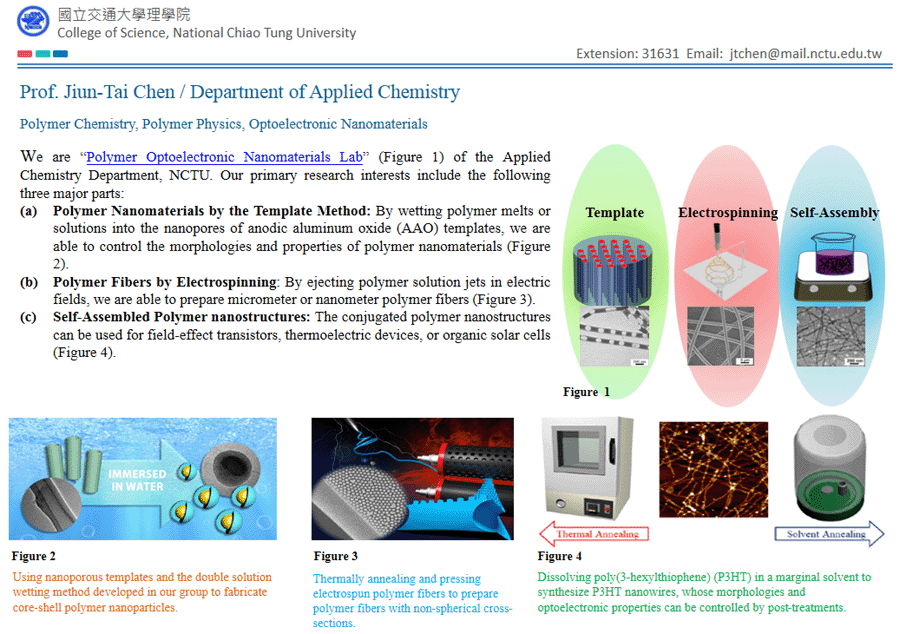
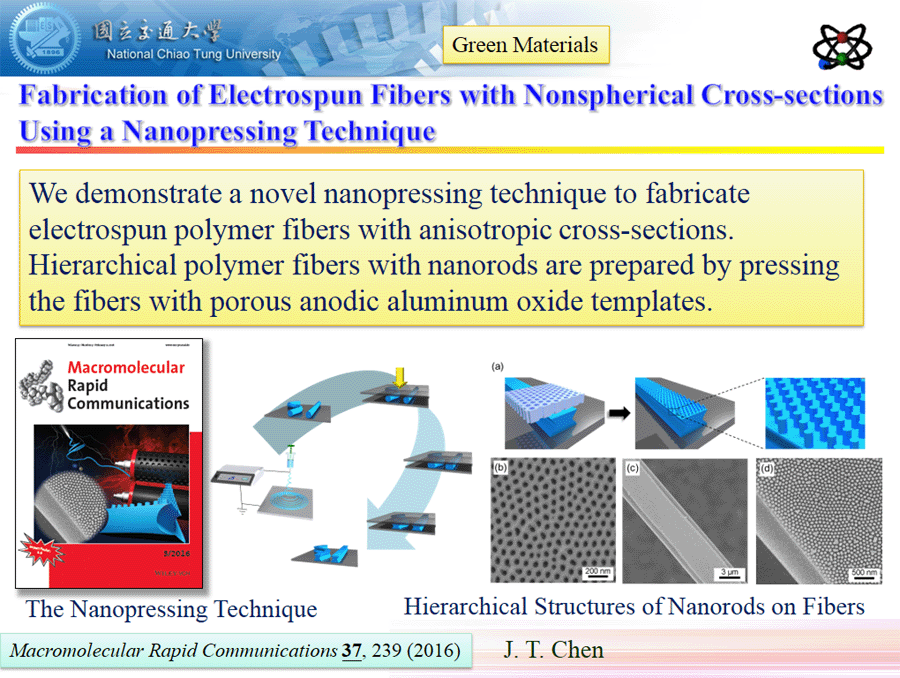
We are specifically interested in three areas of research.
 |
Polymer |
Syntheisis and characterization of homopolymers and block copolymers |
| |
|
|
 |
Nano |
Generation and self-assembly of novel nanostructures |
| |
|
|
 |
Energy |
Applications in areas such as photovoltaics or fuel cells |
| |
|
|
|
|
 |
| |
Word Cloud of Research |
| |
| |
| |
|
|
| |
|
|
| |
|
|
| |
|
|
Anodic Aluminum Oxide Template |
| |
|
|
Anodic aluminum oxide (AAO) template is prepared electrochemically from aluminum metal. The popularity of the AAO template is because of its exceptional thermal stabilities, ease of fabrication, and its versatility as far as controlling the pore diameter and pore length. The AAO template is widely used for the formation of metallic and semiconductor nanowires, and even carbon nanotube transistors. The AAO templates typically contain high porosities, and the pores are arranged in a hexagonal array. These templates can be created with uniform pore sizes and distributions. The dimension of the templaes can be tuned by us ing different anodization conditions. |
| |
|
|
 |
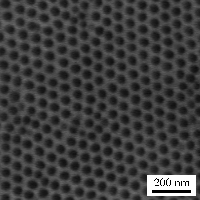 |
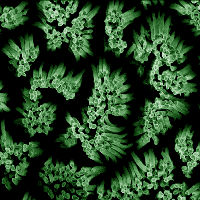 |
| |
|
|
Novel Polymeric Stuctures Induced by Instabiliies |
| |
|
|
We study on thin film instabilities in confined channels . T he thermal properties of one-dimensional nanostructures are investigated . We prepare t hin films of poly(methyl methacrylate) (PMMA) by filling cylindrical nanopores in an anodic aluminum oxide (AAO) membrane with a PMMA solution. When the PMMA nanotubes were altered because of a change in temperature, waves in the film thickness formed and were induced by Rayleigh instability. The amplitude of the waves increased over time and bridged across the nanopore in the membrane, resulting in the formation of hole-containing polymer nanorods. The same result was observed when PMMA films were confined within carbon nanotubes (CNTs). The Rayleigh instabilities in these structures offer an innovative way to manipulate and to create polymer nanostructures, and the nanorods may have potential applications such as optical sensors or drug delivery devices. |
| |
|
|
 |
 |
 |
| |
|
|
|
| |
|
|
|
Hierarchical Polymer Nanomaterials |
|
| |
|
|
|
We explore hierarchical nanostructures based on one-dimensional materials. An obstacle to the wide-spread use of hierarchical nanostructures is the difficulty in controlling the surface properties of the structures because of unclear and uneven surface patterns. We introduce a noval technique to create hierarchical nano rod arrays by utilizing both polymer microspheres and porous anodic aluminum oxide (AAO) templates. Wet polymer microspheres are placed on the templates where they are drawn into the nanopores. Nanorods are created in the nanopores and released into a NaOH(aq) solution. Then the microspheres settled into various layers in a 2D hexagonal array. The AAO template generate s a second scale of ordering with hexagonally packed pores. This research shows that ordering on two different size scales can be controlled by changing the size of the microsphere and pores sizes of AAO templates. A technique that allows such control is important to manipulating key surface properties during the fabrication process. This innovative approach to polymer science is making the precise control and fabrication of novel nanostructures with desired properties a reality. |
|
| |
|
|
|
 |
 |
 |
|
| |
|
|
| |
|
|
Electrogenerated Chemiluminescence (ECL) |
|
| |
|
|
We study the electrogenerated chemiluminescence (ECL) of polyflourenes , a class of polymer materials that is used in making light emitting diodes display. Chemiluminescence is the emission of light as a result of a chemical reaction at environmental temperatures, usually involving an electron transfer reaction. G old nanoparticles are used as initiators in the ECL reaction process by creating leaks. ECL waves formed from the leaks and were determinative of whether the transport process would cease or continue. |
|
| |
|
|
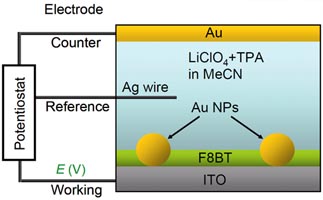 |
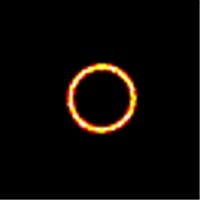 |
|
Polymer Fibers by Electrospinning
Keywords in our research: Polymer, Nano, Instability
|